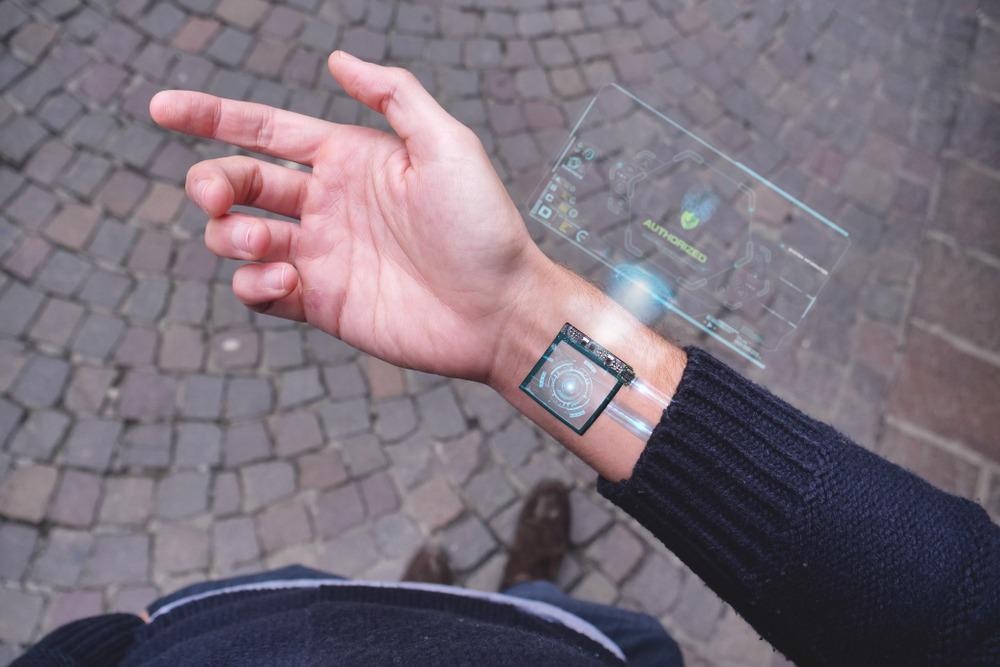In a study published in the journal Nano Energy, a very sensitive hybridized nanofiber and membrane-based pressure gauge has been presented to address the limitations of the current piezo-resistive pressure gauge by boosting operating range and sensitivity.

Study: Polyaniline-nanospines engineered nanofibrous membrane based piezoresistive sensor for high-performance electronic skins. Image Credit: HQuality/Shutterstock.com
What are Wearable e-Skins?
Extensive study into the creation of wearable electronic skin (e-skin) technology has significantly broadened people's perceptions of customized medical care systems.
Elastic e-skin may be made to closely resemble actual skin, allowing for constant non-invasive tracking of physiological data to sustain an optimum health condition. This imitation at the design stage is usually done at the constituent level, like using soft polymers for the material of the substrate, such as skin, adjusting nanoscale frameworks in the sensory layer for enhanced touch responsiveness, and a microcontroller with a cordless component for transmitting and analyzing data, like the sensory nervous system.
In the perspective of the COVID-19 pandemic, the wearable e-skin intends to provide an alternate option to the medical care model via tailored home diagnostics while also reducing hospital congestion. As a result, a range of approaches for implementing this concept has been proposed.
Pliable e-skin for haptic uses, in particular, has received a lot of interest due to its scalability, simplicity, and minimal power usage, and ease of incorporation into a micro-processing unit.
Retaining good sensitivity even in high-pressure conditions, on the other hand, continues to be a serious difficulty.
Important Considerations for Development of Effective e-Skins
The potential to retain good sensitivity throughout a broad operating pressure range is an important criterion for the successful operation of electronic skin in many situations (from modest to major body displacements).
The operational characteristics of sensors (e.g., linearity and sensitivity) have frequently been adjusted primarily in two areas: the material selection for sensory components and micro/nanoscale frameworks.
Taking these factors into account, scientists sought to build micro/nano-sized designs including sea urchin-like micro-designs, stacked micro-domes, spines, micro-pyramids, hollow-sphere morphologies, wrinkly sheets, and multilayered nanofiber matrices for e-skin manufacturing. Nonetheless, each design has its pros and cons.
A critical criterion for good linearity and sensitivity in a piezo-resistive detector is a low starting current and a considerable variation in current with the application of pressure.
In particular, a sensory layer with a coarse texture improves responsiveness in the smaller pressure region by allowing rough interaction between electrodes and the sensory layer.
Furthermore, to increase linearity, the sensor layer needs a large and constant fluctuation in impedance under increasing deformation, as well as a broad sensing range of pressure. Taking these concerns into account, the adoption of a super sensitive thorn-like structure and very compressible electrospun fiber-based membranes aids in enhancing responsiveness and linearity for electronic skin uses.
Makeup of the e-Skin
This study's hybridized nanofiber films were made of cellulose, polyacrylonitrile (PAN), and MXene (PCM), with cellulose and MXene acting as reinforcement materials in the PAN nanofibers.
To achieve conductance, the carbonized-PCM (CPCM) film was produced before applying the PANI-nanospines on the film. The inclusion of PANI-nanospines on the CPCM (P-CPCM) nanofiber film resulted in a bigger region of surface ruggedness and greater variances in area of contact and impedances as opposed to the other micro-designs listed above, greatly improving pressure sensitivity.
Salient Features of the Fabricated e-Skin
The team designed a pliable piezo-resistive gauge with extraordinarily high responsiveness across a wide operating pressure range.
The improved gauge, which was centered around PANI nanospines coated on a multilayer fiber framework, demonstrated very good sensitivity throughout a wide linear band up to 50 kPa.
The findings of this investigation showed that the nanospines geometry across the nanofiber layer generated much bigger variances in area of contact and impedance than many of the documented microstructures, enhancing responsiveness and linearity to the greatest degree.
Moreover, owing to their increased compressibility, electrospun nanofiber films provided good linearity and a broad detection range. Notably, these properties allowed the detector to monitor a broad spectrum of physiological data produced by the human body; like respiration, HR, wrist pulse, JVP, and phonation.
A cordless setup (with Bluetooth, microprocessor, and signal conditioning circuitry) has also been created to broadcast the sensed information to a digital application for real-time constant data tracking.
Using tailored personal diagnostics, we think that the P-CPCM nanofiber film-based pliable pressure detector may be an efficient and beneficial portable medical care equipment, as well as an alternate to the hospitalized care system.
Reference
Sharma, S., Chhetry, A., et al. (2022). Polyaniline-nanospines engineered nanofibrous membrane based piezoresistive sensor for high-performance electronic skins. Nano Energy, 95. Available at: https://www.sciencedirect.com/science/article/pii/S2211285522000556?via%3Dihub
Disclaimer: The views expressed here are those of the author expressed in their private capacity and do not necessarily represent the views of AZoM.com Limited T/A AZoNetwork the owner and operator of this website. This disclaimer forms part of the Terms and conditions of use of this website.